Luxury cars have always represented the pinnacle of automotive design, engineering, and prestige. They’re often equipped with the latest innovations, the finest materials, and the most powerful drivetrains.
But not all luxury vehicles are created equal—especially when it comes to long-term reliability. Some manage to combine opulence with longevity, proving themselves worthy investments for owners who expect durability with their comfort.
Others, despite their high price tags and prestigious badges, suffer from frequent mechanical failures, sky-high maintenance costs, and a tendency to spend more time in the shop than on the road.
This duality in the luxury car market is what makes it so compelling—and risky. Buyers often assume that a higher price tag guarantees superior build quality, but that’s not always true.
Our goal is to break down this myth by spotlighting five luxury cars that truly stand the test of time and five that notoriously fall apart, despite their upscale image.
Whether you’re a discerning buyer looking for a dependable used luxury car or someone curious about which brands overpromise and underdeliver, this guide dives deep into both camps.
Reliability matters at every price point, and in the world of luxury, it separates the legends from the lemons.
Also Read: 5 Cars Built for the Long Haul and 5 That Collapse in the First Year
5 Luxury Cars That Last
Luxury isn’t just about leather upholstery, a prestigious badge, or a smooth ride. For many drivers, especially those considering pre-owned models, the true luxury lies in peace of mind—knowing the vehicle they invested in won’t become a money pit down the line. While plenty of high-end automakers promise longevity, only a select few consistently deliver.
That’s why this list of “5 Luxury Cars That Last” focuses on vehicles that not only offer opulence but also exhibit exceptional dependability over years of ownership.
These cars don’t just survive—they thrive through high mileage, minimal mechanical failures, and consistent owner satisfaction. Many of them are known to reach 150,000 miles or more without major issues, a milestone that’s all the more impressive considering the complexity of modern luxury vehicles.
We’re highlighting these models to offer a practical angle to luxury car ownership—because not every premium vehicle ends up costing a fortune in repairs.
Whether it’s a full-size sedan known for its tank-like durability or a midsize luxury SUV that continues performing with minimal fuss, these cars prove that real luxury doesn’t end at the dealership—it endures.
We’re writing about them because consumers often assume that reliability and luxury are mutually exclusive. But that’s far from the truth.
For every high-maintenance exotic, there’s a well-engineered premium model that holds up like a Toyota. If you’re shopping used or even considering new with long-term ownership in mind, these are the five luxury cars you’ll want to keep at the top of your list.
1. Lexus LS 430 (2001–2006) — The Quiet Tank of Luxury Reliability
If there were ever a vehicle that perfectly blended understated luxury with legendary reliability, it’s the Lexus LS 430.
Introduced in the early 2000s, the LS 430 wasn’t flashy or trendy—but that was the point. It was meticulously engineered to deliver a serene driving experience that could outlast even the most rugged commuter cars.
Powered by a naturally aspirated 4.3-liter V8 engine mated to a smooth 5-speed or 6-speed automatic transmission, the LS 430 offers buttery-smooth performance without relying on turbochargers or finicky components.
This conservative yet bulletproof powertrain is one of the key reasons owners regularly report these cars hitting 250,000 miles and beyond with few serious mechanical issues.
Lexus—Toyota’s luxury arm—built the LS 430 with an obsessive attention to detail. Interior materials hold up remarkably well even after decades, and comfort features like soft-close doors, ventilated seats, and adaptive cruise control were ahead of their time.
But where the LS 430 truly shines is in its long-term cost of ownership. Despite its luxury status, maintenance and repair costs are surprisingly low, especially when compared to European rivals like the BMW 7 Series or Mercedes-Benz S-Class.
Another often-overlooked advantage is the car’s electronics. While many luxury vehicles from the early 2000s suffer from glitchy infotainment systems or failing sensors, the LS 430’s simpler, well-tested systems continue working with little fuss.
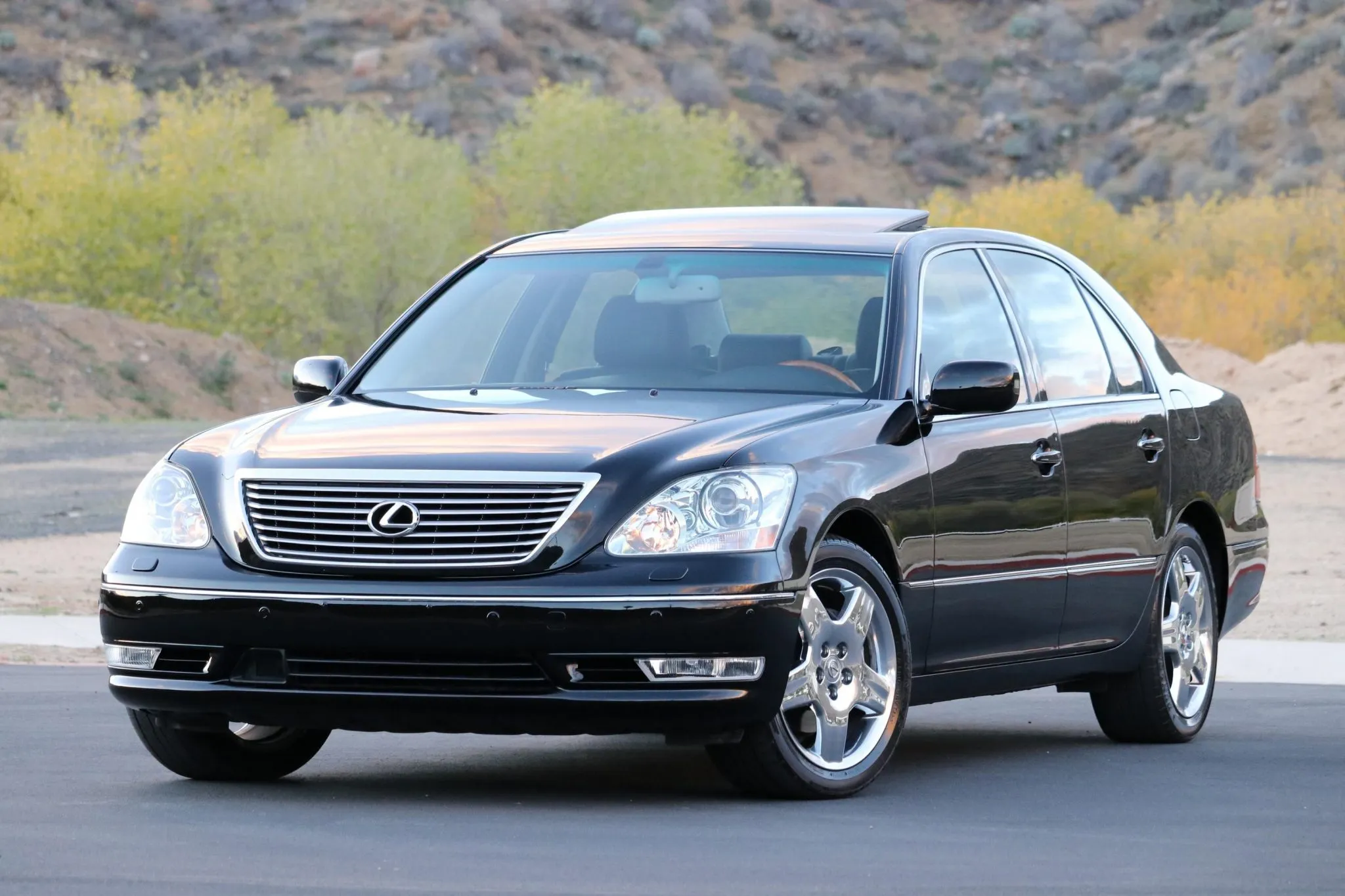
Air suspension issues can arise on higher-mileage units, but many models came with conventional coil springs, eliminating that concern altogether.
This car has built a near-mythical reputation among enthusiasts and mechanics alike. It’s not uncommon to find examples still on the road with original engines and transmissions, and forums are filled with stories of owners praising their LS 430s for their unmatched longevity.
We’ve chosen the LS 430 not just because it lasts, but because it redefines what a luxury car should be—quiet, refined, and built to endure.
While other high-end vehicles might look flashier or boast more gadgets, few match the long-term dependability of this Japanese flagship. If you’re looking for a luxury car that won’t let you down, the LS 430 is one of the best ever built.
2. Acura RL (2005–2012) — The Sleeper Sedan That Refuses to Quit
The second-generation Acura RL might not have turned heads like its German rivals, but it was never built for flash.
Instead, it quietly delivered premium comfort, cutting-edge technology for its time, and a drivetrain so dependable it’s still turning daily commutes into stress-free rides over a decade later. For buyers who value substance over sizzle, the Acura RL is a luxury sedan that truly lasts.
Under the hood lies Honda’s robust 3.5-liter V6 engine, pushing out around 300 horsepower. Mated to a 5-speed automatic transmission and Acura’s Super Handling All-Wheel Drive (SH-AWD) system, the RL offered a sophisticated driving experience that balanced power and poise.
But what really sets the RL apart is its bulletproof powertrain. This V6 has long been known for its resilience, routinely crossing the 200,000-mile mark with only basic maintenance.
Unlike some of its European peers, the RL is not bogged down with overly complex electronic systems that tend to fail over time.
Acura focused on integrating technology that actually worked, like voice-activated navigation, real-time traffic updates, and adaptive headlights. And it all ages surprisingly well—no flickering iDrive screens or temperamental COMAND modules here.
The RL’s build quality is another highlight. Soft-touch materials, high-quality leather, and precise panel gaps all contribute to a premium experience that doesn’t deteriorate with age. Even at high mileage, you’re unlikely to encounter the kind of interior wear and tear often seen in luxury sedans.
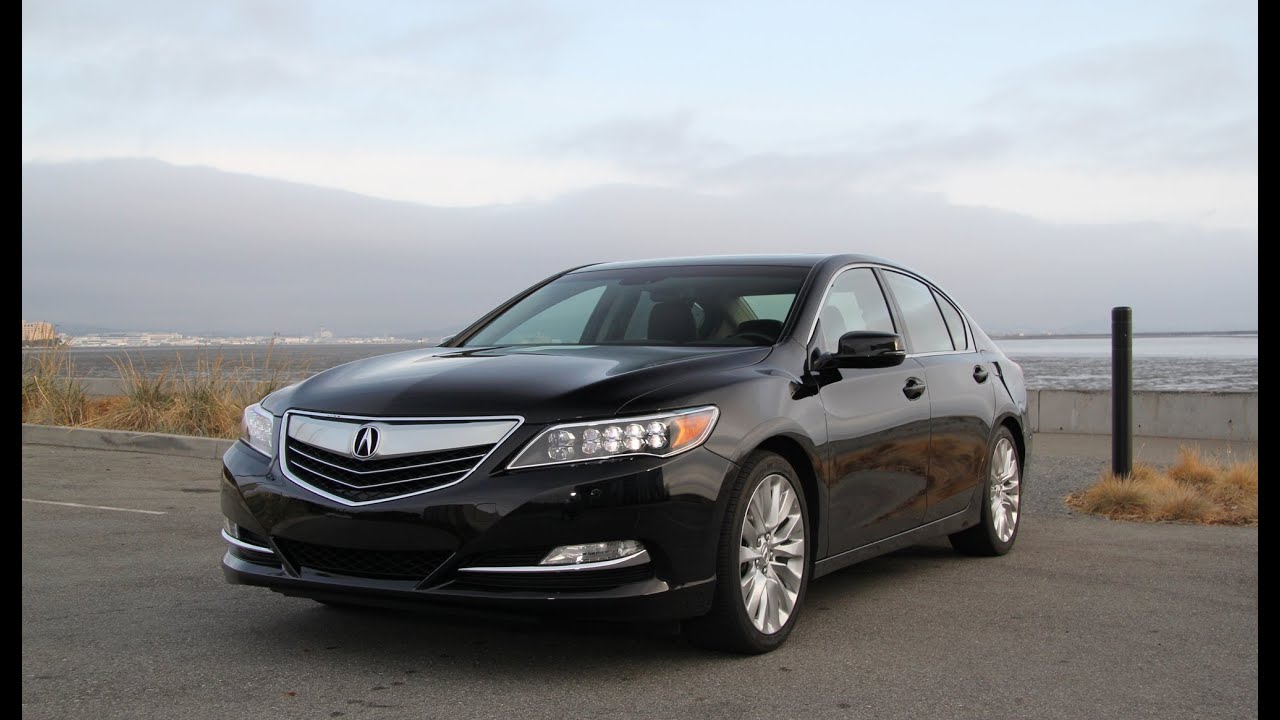
The RL was also less prone to issues related to air suspension or turbocharging—because it had neither. Simplicity, when executed right, is a powerful tool for long-term dependability. And in the RL, that means fewer costly repairs and fewer surprises for second or even third owners.
We’re including the Acura RL because it’s a criminally underrated luxury car that rarely lets owners down. While it may lack the cachet of a Mercedes or BMW, it delivers what matters most in the long run: reliability, comfort, and low maintenance costs.
In a market full of overcomplicated machines, the RL’s honesty and durability make it a lasting luxury gem.
3. Mercedes-Benz E-Class (W211, 2006–2009 facelift models) — German Engineering Done Right
While Mercedes-Benz isn’t typically the first name that comes to mind when talking about reliable luxury cars, the facelifted W211 E-Class (2006–2009) is a notable exception.
This generation, particularly the post-2006 models, represents one of the rare instances where Mercedes corrected previous flaws and produced a mid-size luxury car that combines elegance with serious long-term durability.
The early W211 (2003–2005) had its fair share of electrical nightmares and SBC brake-by-wire issues, but Mercedes addressed these in the 2006 facelift.
The updated E350 came equipped with the more robust 3.5-liter V6 (M272) and a conventional hydraulic braking system, eliminating many of the headaches associated with earlier versions.
These changes turned the E-Class into a vehicle that owners could trust for high mileage and daily reliability without sacrificing luxury.
The interior is classic Mercedes—restrained, elegant, and built with high-quality materials that wear gracefully. Leather, wood trim, and soft-touch plastics hold up well over time. The seats remain comfortable on long journeys, and despite its age, the car still feels solid and planted on the road.
Where the W211 really excels is in its balanced engineering. It doesn’t overcomplicate things with unnecessary tech, and when maintained properly, the car rewards owners with smooth performance and a serene ride.
The naturally aspirated V6 models are particularly known for their longevity, often clearing 200,000 miles with only routine servicing.
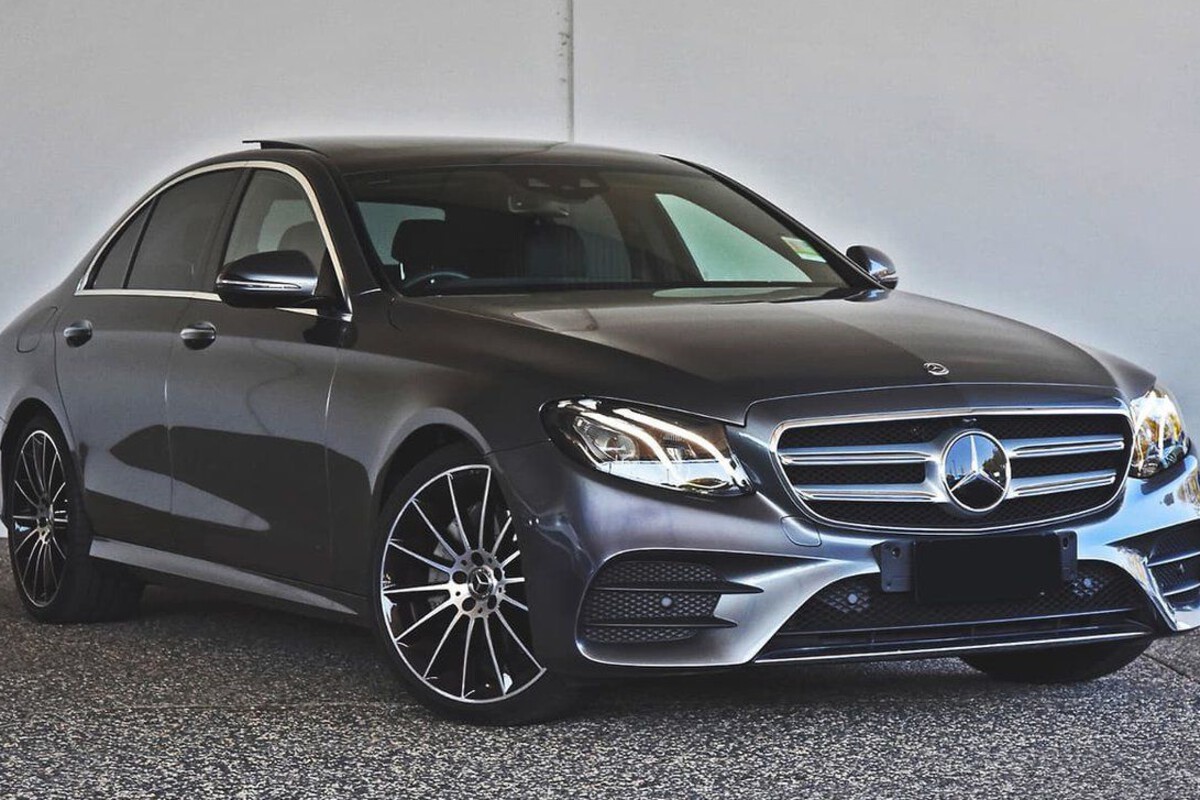
Another key to this E-Class’s success is its parts availability and strong aftermarket support. Independent shops are well-versed in its maintenance needs, and used parts are plentiful, keeping ownership costs in check—especially compared to newer, less DIY-friendly Mercedes models.
We’re including the facelifted W211 because it proves that German luxury doesn’t always have to mean fragile and finicky.
When executed with care—as Mercedes finally did with this iteration—the result is a refined, durable machine that lives up to its badge. For those wanting classic European luxury with real staying power, the 2006–2009 E-Class delivers exactly that.
4. Lexus GX 460 (2010–Present) — The Indestructible Luxury SUV
The Lexus GX 460 is one of the few luxury SUVs that feels just as comfortable at a valet stand as it does on a rocky mountain trail.
Built on the rugged Toyota Land Cruiser Prado platform, the GX 460 is essentially a high-end off-roader in a luxury wrapper—making it one of the most durable and dependable vehicles in its class.
What powers this beast is a 4.6-liter V8 engine mated to a 6-speed automatic transmission, a pairing known for its smooth performance and rock-solid reliability.
The drivetrain is as old-school as it gets—no turbocharging, no CVTs, no overly complicated hybrid systems—just proven mechanical components that seem to last forever when maintained properly.
Owners often push their GX 460s well beyond 200,000 miles, and many examples continue running strong at 300,000+ with original engines and transmissions. This isn’t anecdotal—it’s backed by decades of Toyota’s bulletproof engineering and Lexus’s obsessive quality control.
The interior may not have the flash of newer German SUVs, but it’s incredibly well-built. Real leather, solid switchgear, and clean design make for a cabin that ages gracefully.
And unlike many tech-heavy rivals, the GX 460’s infotainment and driver assistance systems are relatively simple and rarely glitch. You’ll rarely hear about screen failures or electrical gremlins.
Another reason for the GX’s longevity? Its global DNA. This SUV is sold around the world in harsher environments under different names, often used as a utility vehicle in regions where failure isn’t an option.
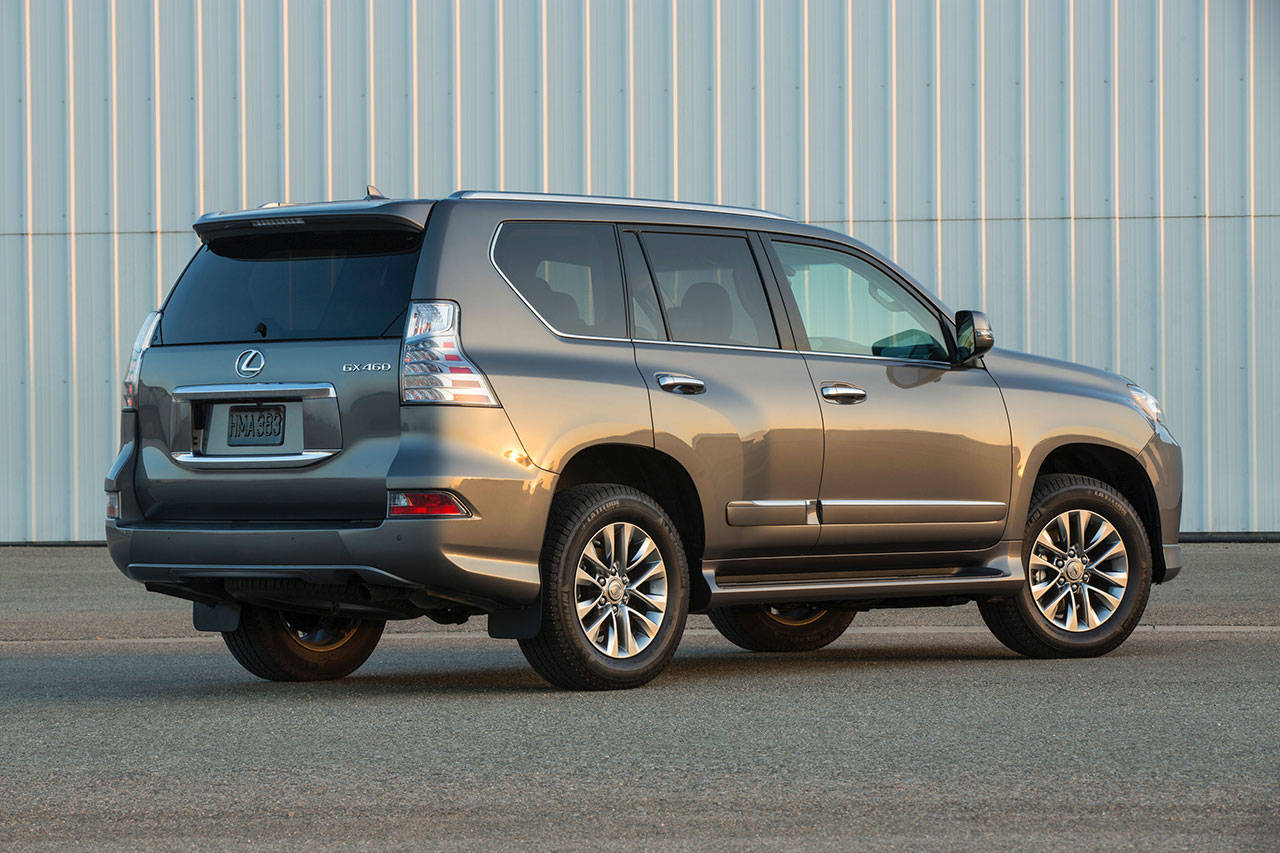
In the U.S., that same durability gets a leather interior and a premium badge—but it’s still the same hardy platform underneath.
We’re highlighting the GX 460 because it defies the typical image of a fragile, high-maintenance luxury SUV. It’s one of the few that can be considered a true long-term investment—capable of hauling kids to school on Monday and climbing steep trails on the weekend, year after year.
If you’re looking for a luxury SUV that lasts as long as the best-built pickups and still pampers its occupants, the Lexus GX 460 deserves a spot at the top of your list.
5. Audi A6 (C6, 2009–2011 3.0T Quattro) — A Rare German That Gets Reliability Right
Audi doesn’t often come up in conversations about long-term reliability, but the 2009–2011 Audi A6 C6 with the 3.0-liter supercharged V6 (designated 3.0T) and Quattro all-wheel drive is a notable exception.
This specific configuration marks a sweet spot in Audi’s lineup where performance, build quality, and long-term durability came together in a way that few expected—and many have come to admire.
At the heart of this success story is the 3.0T engine. Unlike Audi’s earlier turbocharged inline-fours and V6s that were known for oil consumption and timing chain issues, the supercharged 3.0-liter V6 proved to be a workhorse.
It delivers a healthy 300+ horsepower while maintaining impressive smoothness and dependability, often lasting well beyond 150,000 miles with only routine maintenance.
The Quattro AWD system is another standout. It’s been a cornerstone of Audi’s performance image for decades, and in the C6 A6, it provides both traction and durability.
The mechanical, Torsen-based Quattro system used in this era is more robust and less complex than some newer alternatives, making it less prone to failure over time.
Interior-wise, the A6 feels every bit like a premium German sedan. Real wood inlays, soft-touch materials, and supportive leather seats give it a timeless, luxurious feel. More importantly, these cabins age gracefully.
Audi’s MMI system during this period was well-executed and relatively trouble-free compared to rivals like BMW’s iDrive or Mercedes’ COMAND system.
This version of the A6 also avoided many of the high-maintenance pitfalls of other luxury vehicles.
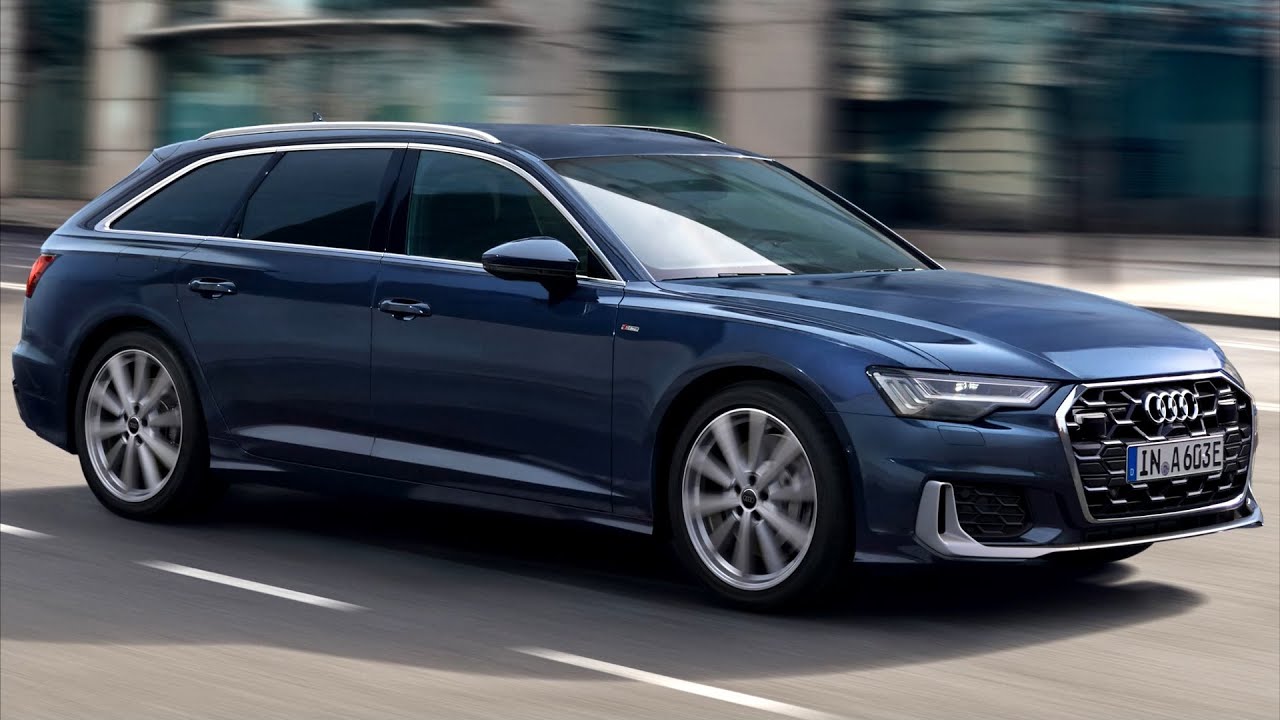
It didn’t use air suspension (unless optioned), had fewer over-complicated electronics than newer Audis, and its engine and drivetrain proved far more robust than Audi’s reputation might suggest.
We’ve chosen this specific Audi A6 because it goes against the grain—it shows that with the right configuration, even a brand often plagued by reliability concerns can produce a truly dependable luxury car.
For buyers who want the experience of driving a refined German sedan without constantly fearing repair bills, the 3.0T Quattro A6 is a hidden gem in the used luxury market.
5 Luxury Cars That Constantly Break
Luxury car ownership should be a rewarding experience—plush interiors, silky rides, and cutting-edge features all wrapped in an elegant shell. But sometimes, what seems like automotive bliss quickly turns into a financial nightmare.
For every dependable high-end vehicle, there’s another that, despite its brand prestige and price tag, is plagued by frequent breakdowns, electronic gremlins, and astronomical repair costs.
This part of the guide—“5 Luxury Cars That Constantly Break”—dives into those models that have earned a reputation not for excellence, but for frustration. We’re not talking about the occasional lemon, either.
These are cars with systemic issues: problematic engines, unreliable transmissions, overly complicated electronics, or poorly executed innovations that didn’t age well. Often, they leave their owners shelling out thousands of dollars for repairs they never expected when they first bought into the badge.
It’s easy to be dazzled by the prestige of owning a luxury car, but it’s also easy to overlook warning signs.
Many of these vehicles suffered from chronic reliability problems soon after release, with issues becoming more severe as they aged. Some were even quietly dropped or replaced by manufacturers who realized they missed the mark.
We’re writing about them to serve as a warning—because knowing which models to avoid is just as important as knowing which ones to trust.
Whether you’re shopping used or researching long-term ownership costs, this list pulls no punches. If you want luxury without regret, you’ll want to think twice before taking a chance on these notorious underperformers.
1. BMW 7 Series (E65/E66, 2002–2008) — A Rolling Tech Experiment Gone Wrong
The fourth-generation BMW 7 Series, internally known as the E65/E66, was one of the boldest and most controversial cars BMW ever released.
Designed under the direction of Chris Bangle, it marked a dramatic departure in styling and engineering from its predecessor. While it certainly pushed the envelope in terms of technology and design, it also pushed many owners—and mechanics—to the edge of their patience.
This generation was a showcase for BMW’s ambitions. It introduced the first version of iDrive, BMW’s all-in-one infotainment controller that replaced traditional buttons with a central screen and rotary knob.
Unfortunately, this early system was clunky, unintuitive, and plagued with bugs. Even seasoned tech users found it frustrating, and over time, the electronics behind it became notorious for failing.
But the problems went well beyond infotainment. The E65 was loaded with sensors, modules, and servo motors—many of which were overengineered and under-tested.
Owners frequently reported electrical issues ranging from malfunctioning door locks to failed air suspensions, flickering dashboards, and inexplicable warning lights.
Under the hood, the V8 and V12 engines offered smooth power but were far from bulletproof. The 745i’s N62 V8, for example, suffered from valve stem seal issues, coolant leaks, and oil consumption problems. Transmission failures weren’t uncommon either, particularly as mileage crept over 100,000.
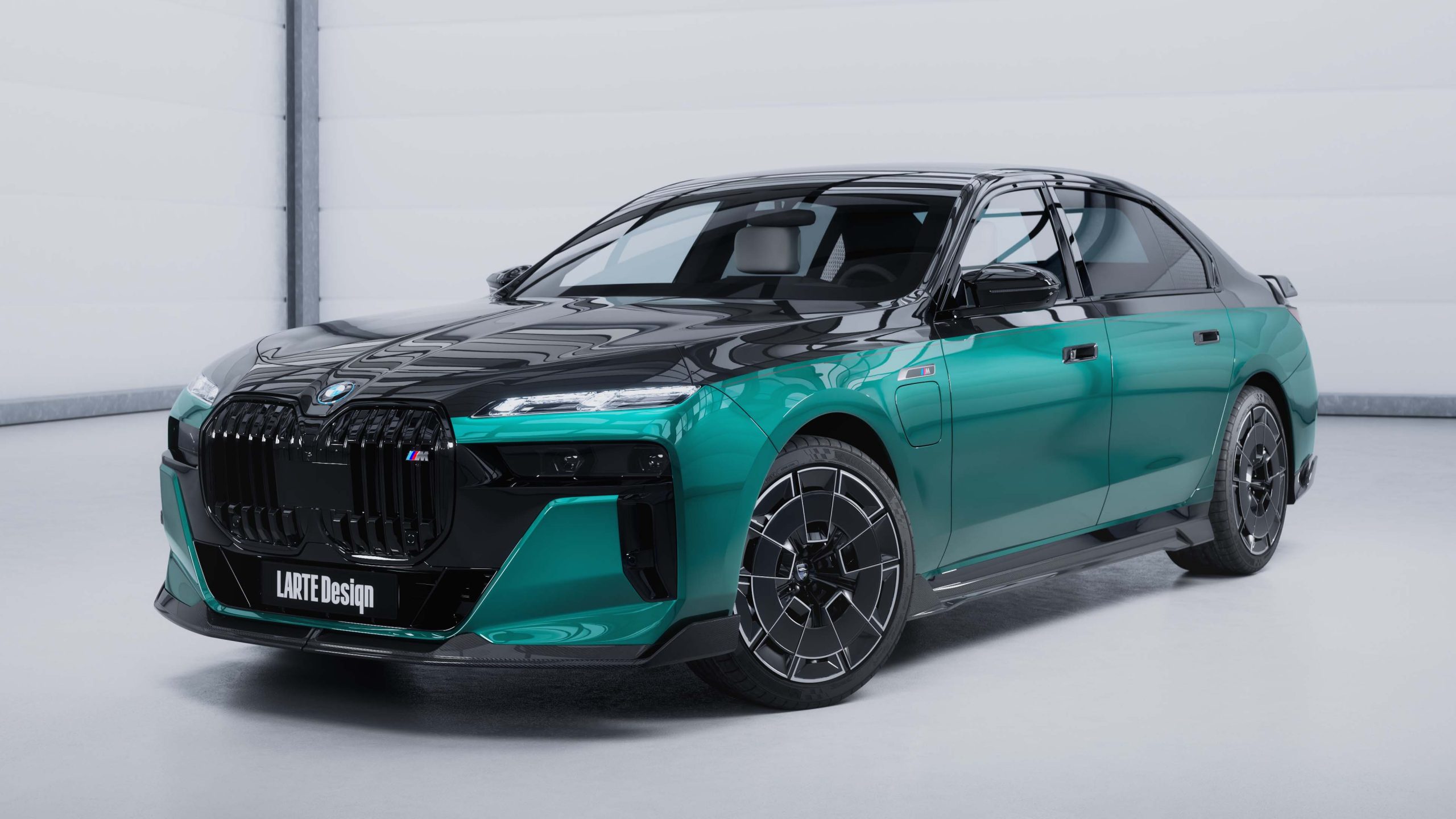
Even basic maintenance on the E65 can be painfully expensive. Accessing components often requires removing large swaths of body panels or interior trim. As a result, labor costs skyrocket, and many independent shops hesitate to work on them at all.
We’ve included the E65 7 Series because it serves as a cautionary tale: high-tech doesn’t always mean high-quality.
BMW used this generation as a testing ground for new features, but owners ended up paying the price—in time, money, and headaches. While it may still look imposing and luxurious on the outside, the inner workings of this car are anything but dependable.
Unless you’re a brave enthusiast with deep pockets and a high pain tolerance, the E65 is one luxury sedan better admired from a distance.
2. Jaguar XJ8 (X350/X358, 2004–2009) — British Luxury, Mechanical Misery
Few cars embody classic British elegance like the Jaguar XJ8. With its long hood, low-slung profile, and wood-and-leather cabin, the X350/X358 generation (2004–2009) looked every bit the aristocrat’s chariot.
And on paper, it seemed to have everything: a lightweight aluminum chassis, a refined V8 engine, and cutting-edge tech for its time. Unfortunately, it also had a persistent habit of breaking down—often, and expensively.
The centerpiece of the XJ8 was its 4.2-liter V8, which, while smoother than older Jaguar engines, suffered from timing chain tensioner failures and cooling system issues.
These weren’t cheap repairs—if left unaddressed, they often led to full engine replacements. On top of that, the engine bay was notoriously cramped, making even routine services time-consuming and costly.
One of the biggest problems, however, was the air suspension. Jaguar equipped the XJ8 with height-adjustable air springs designed to improve ride comfort. In reality, the system was prone to leaks, pump failures, and sensor glitches.
A single failed air strut could set you back thousands, and many owners found themselves replacing the entire setup within 80,000 miles.
Then there were the electrical gremlins—a British automotive tradition. From failing window regulators to glitchy infotainment systems and unpredictable instrument clusters, the XJ8’s electronics aged poorly.
Owners often found themselves chasing minor issues that added up quickly in both cost and annoyance.
Even though the X350’s aluminum body was praised for reducing weight and improving performance, it introduced complexity in repair.
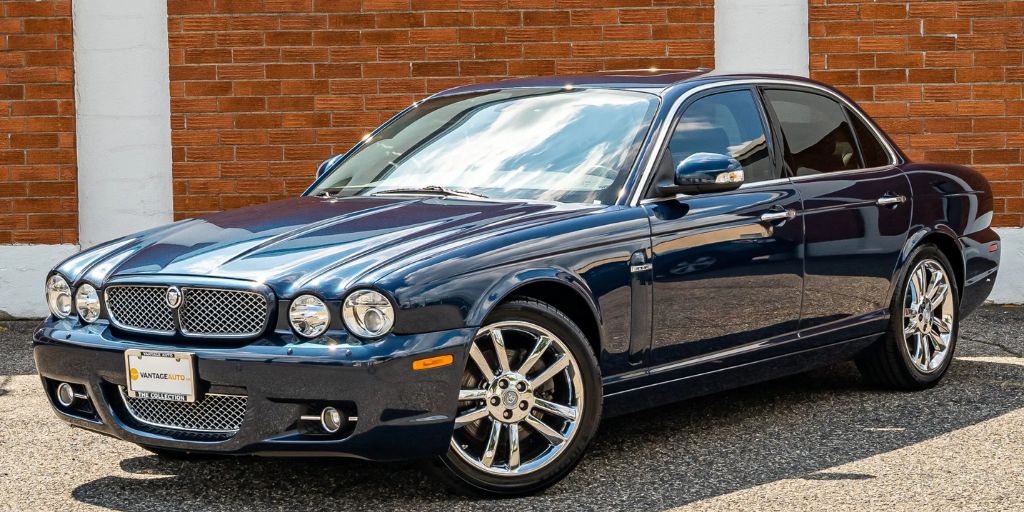
Not every body shop could handle aluminum, making collision repairs far more expensive and limiting where the car could be serviced.
We’ve included the Jaguar XJ8 on this list because it represents a luxury car that dazzled at first glance but disappointed in the long run. While it offered old-world charm and contemporary power, it lacked the mechanical dependability to back it up.
The XJ8 remains tempting on the used market due to its price and appearance—but potential buyers should be warned: underneath that polished British exterior is a car that can bleed your wallet dry with repair bills. For most, it’s luxury without longevity.
3. Range Rover (L322, 2003–2012) — When Prestige Meets Unreliability
The third-generation Range Rover (L322) is one of the most iconic SUVs ever made. Combining off-road heritage with upscale refinement, it promised everything: go-anywhere capability, British opulence, and serious street presence.
But beneath the luxurious surface was a nightmare of mechanical complexity and electrical issues that made ownership a test of endurance—and a frequent drain on the bank account.
Initially developed during BMW’s ownership of Land Rover, the early L322s (2003–2005) featured BMW’s 4.4-liter M62 V8 engine. While smooth, this powerplant was never known for its durability, and the cooling system was particularly fragile.
Overheating, water pump failures, and oil leaks were all too common. Later models switched to Jaguar-sourced V8s, which introduced their own share of problems, including timing chain tensioner failures and excessive oil consumption.
But where the L322 truly falls apart—sometimes literally—is in its electronics and suspension systems. The air suspension is notoriously unreliable, with frequent compressor failures, leaking air springs, and faulty ride height sensors.
Combine that with terrain response systems, adaptive dampers, and countless sensors, and you get an SUV that’s more likely to leave you stranded than conquer a trail.
Electrical issues are constant companions in the L322. Everything from window switches to central locking systems to the entire infotainment stack is prone to failure.
The early versions used a fiber-optic MOST bus for their entertainment systems—cutting-edge at the time, but nearly impossible to troubleshoot or repair now.

Even the luxury features turn into liabilities over time. Heated seats stop working, navigation screens go blank, and backup cameras fail. Owners frequently report dashboard Christmas trees of warning lights, often with no clear solution even after multiple diagnostic scans.
We’ve included the L322 Range Rover because it’s the poster child for the gap between luxury image and reliability reality. It might be incredibly capable off-road, and it certainly turns heads on the street, but it simply doesn’t hold up over time.
Unless you have deep pockets and a dedicated mechanic, this is one luxury SUV better left as a Pinterest dream or driveway decoration. For most drivers, the L322 is a case of champagne taste with mechanical consequences.
4. Maserati Quattroporte (Fifth Generation, 2004–2012) — Italian Drama You Didn’t Ask For
Few cars exude the flair, drama, and sheer presence of a Maserati Quattroporte. With its Pininfarina-designed body, Ferrari-derived V8, and glorious exhaust note, the fifth-generation Quattroporte (2004–2012) was built to stir the soul.
Unfortunately, it also stirred up headaches for owners due to its chronic unreliability, unpredictable behavior, and steep maintenance costs.
At the heart of the Quattroporte lies a Ferrari-sourced 4.2-liter (later 4.7-liter) V8 engine that sounds magnificent and pulls strongly—but that’s where the praise largely ends.
Early models used the DuoSelect electrohydraulic manual transmission (also called Cambiocorsa), which was a disaster in a luxury sedan.
Gear changes were jerky and slow in traffic, and clutch wear was so aggressive that many owners found themselves replacing the clutch as often as every 30,000 miles—a wildly expensive repair.
Later models switched to a more traditional ZF automatic, which helped drivability but did little to resolve deeper reliability issues. Cooling system problems, electrical malfunctions, and suspension failures were all common across model years.
The electronically adjustable Skyhook suspension, while advanced, proved highly temperamental and prone to costly repairs.
Inside, the cabin looked stunning with its blend of leather, wood, and chrome, but even that came with compromises.
Buttons peeled, infotainment screens glitched or froze, and the quirky ergonomics made daily use awkward. Combine that with inconsistent build quality, and even the cabin couldn’t deliver lasting satisfaction.
Electrical problems were another persistent plague. Owners reported issues with power windows, central locking, instrument cluster failures, and even total electrical shutdowns.
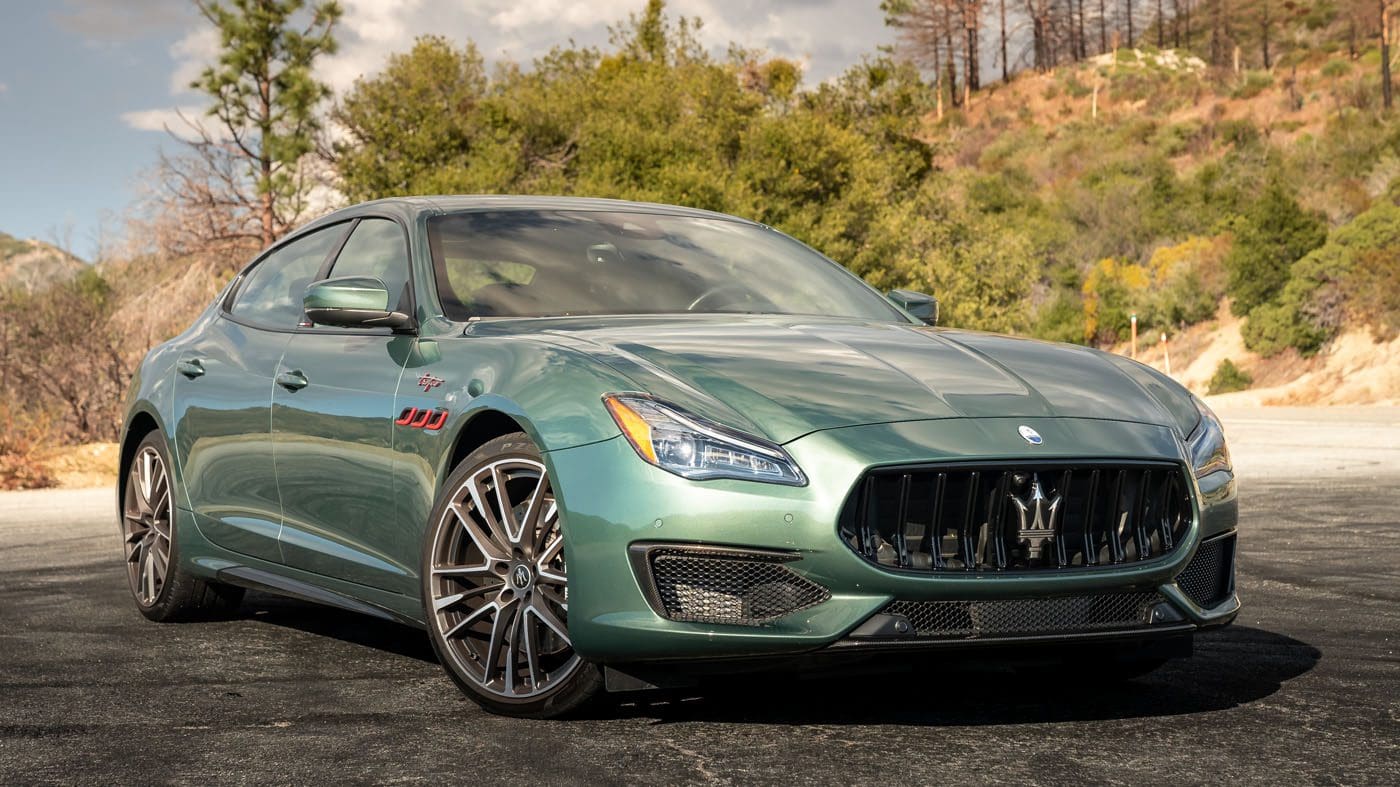
Diagnosing and repairing these problems is complicated by Maserati’s limited service network and the fact that few independent shops are willing—or qualified—to work on these cars.
We’ve included the Quattroporte here not because it lacks soul—far from it—but because it constantly lets that soul down with breakdowns and eye-watering repair bills. It’s a perfect example of what happens when performance and style are prioritized over durability and quality control.
The Quattroporte might still turn heads, but it will also turn your budget upside down. Unless you’re buying one as a weekend toy with full knowledge of the risks, this Italian luxury sedan is best admired from afar—not owned.
5. Mercedes-Benz S-Class (W220, 2000–2006) — The Fragile Flagship
The Mercedes-Benz S-Class is often viewed as the gold standard in full-size luxury sedans—but the W220 generation (2000–2006) is a rare misstep in that legacy.
While it offered groundbreaking features and a refined driving experience when new, this S-Class has since become infamous for its poor reliability, over-engineering, and repair costs that can cripple even seasoned luxury car owners.
At launch, the W220 was praised for its sleek design and abundance of high-tech features, including adaptive cruise control, COMAND infotainment, active suspension, and more.
However, time has revealed that many of these innovations were not ready for prime time. Owners often found themselves in an endless cycle of fixing failed air suspensions, malfunctioning electronic systems, and premature engine or transmission issues.
The AIRMATIC suspension system, designed to provide a floaty, adjustable ride, is the most notorious offender.
Failed air struts, leaking compressors, and defective ride height sensors are practically guaranteed after 100,000 miles—and the fixes aren’t cheap. Some owners even opt to convert to coil springs to avoid repeated breakdowns.
The electronics haven’t aged any better. Early COMAND systems were glitchy and slow even when new, and over time, everything from power seats to climate controls to dashboard displays become vulnerable to failure.
Poor-quality wiring insulation led to short circuits in some models, and electrical gremlins are a constant complaint among owners.
Mechanically, the W220 isn’t much better. V8-powered models like the S430 and S500 suffer from oil leaks, cooling system issues, and transmission faults. The more powerful S600 and S55 AMG variants, while exhilarating to drive, are exponentially more complex—and more expensive—to maintain.
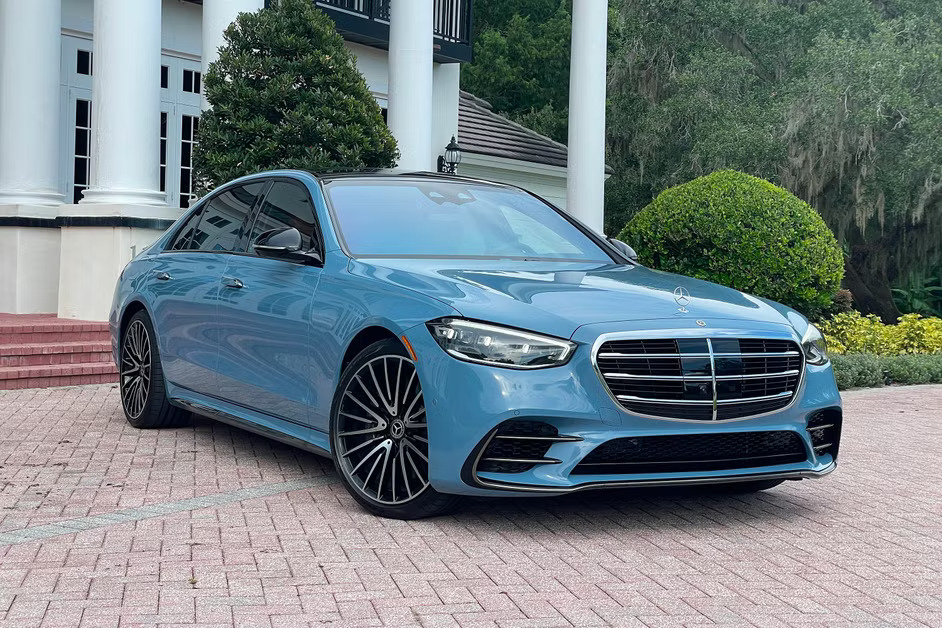
Why is the W220 on this list? Because it represents what happens when ambition exceeds execution.
Mercedes aimed to deliver a tech-laden luxury experience, but the result was a car that aged poorly and required constant, costly upkeep. Even minor repairs often involve hours of labor due to the tightly packaged engine bay and fragile components.
The W220 S-Class may still look stately and luxurious on the outside, but it’s a high-risk proposition beneath the surface. For anyone considering used luxury on a budget, this is a cautionary tale—sometimes, prestige isn’t worth the pain.
Luxury cars promise an elevated driving experience—refined materials, serene rides, advanced technology, and prestige that makes a statement. But as we’ve seen, not all luxury vehicles deliver where it matters most: reliability.
Some models combine high-end features with exceptional longevity, offering owners both comfort and confidence for hundreds of thousands of miles.
Others, unfortunately, turn the dream into a financial nightmare, requiring constant maintenance, expensive repairs, and repeated trips to the service bay.
The five vehicles we highlighted in the “Luxury Cars That Last” category—like the Lexus LS 430, Acura RL, and Lexus GX 460—show that real luxury lies in peace of mind.
These cars are engineered with long-term durability in mind, relying on proven drivetrains, conservative design choices, and superior build quality.
They don’t just look and feel premium; they deliver a stress-free ownership experience year after year, often outliving even some mass-market vehicles.
On the flip side, our list of “Luxury Cars That Constantly Break” is a sobering reminder that a high price tag doesn’t guarantee long-term value.
Models like the BMW E65 7 Series, Range Rover L322, and Maserati Quattroporte lured buyers with bold styling and bleeding-edge tech—but many couldn’t deliver on dependability.
These vehicles often suffer from overcomplication, fragile electronics, and poor quality control, leading to repair costs that far outweigh their depreciated resale values.
Ultimately, whether you’re shopping new or used, the lesson is clear: luxury must be built on a foundation of reliability.
Features fade, designs age, and technology becomes obsolete—but a solid powertrain, dependable components, and thoughtful engineering hold their value for years.
Choosing the right luxury car means looking beyond the badge and brochure. It means doing your homework, listening to long-term owners, and understanding which models truly live up to their premium promises.
Because when luxury and longevity go hand in hand, the experience is not just about status—it’s about satisfaction.
Also Read: 5 Cars With Legendary Resale and 5 That Nobody Wants

